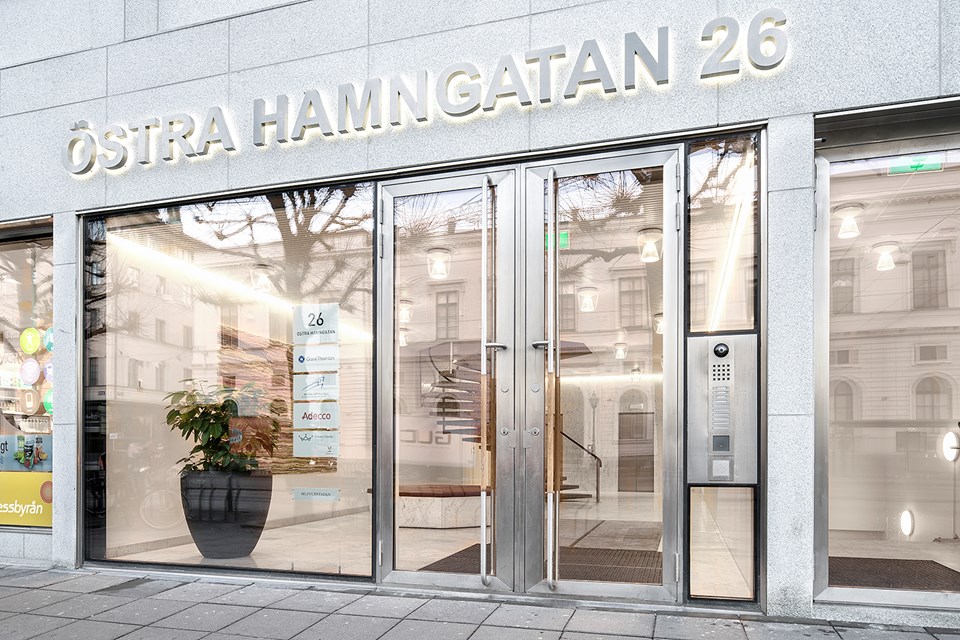
Hufvudstaden’s finance function is a Group function charged with central responsibility for financing and liquidity planning. The work is governed by the Finance policy decided by the Board of Directors, which aims to secure the Group’s financing requirements at the lowest possible cost and risk.
Within the finance function, there are instructions, systems and rules of procedure to achieve good internal control and follow-up of operations.
Major financing solutions and derivative transactions should be approved by the Chairman of the Board and the Board is informed at each Board meeting about financial issues.
Financing structure
Total borrowings as of September 30, 2025 amounted to SEK 10,800 million (9,800 at year-end). Interest-bearing net debt was SEK 10,398 million (9,327 at year-end). In addition, the lease liability according to IFRS 16 amounted to SEK 729 million (736 at year-end), and total net debt was SEK 11,127 million (10,063 at year-end).
Hufvudstaden has a framework for green financing that serves as a basis for issuing green bonds and commercial papers and to raise green bank loans. Hufvudstaden has a total of SEK 8.7 billion in green financing, corresponding to 81 per cent of total borrowings, of which bonds amounted to SEK 7.2 billion and bank loans SEK 1.5 billion.
The average fixed interest period, including effects of derivative instruments, was 2.3 years (2.2 at year-end), the average capital tie-up period was 2.5 years (2.2 at year-end), and the average effective rate of interest was 2.9 per cent (2.9 at year-end) including, and 2.8 per cent (2.8 at year-end) excluding, the cost of unutilised loan commitments.
The fair value of all interest-rate derivatives as of September 30, 2025 amounted to SEK -22.0 million (-10.8
at year-end). The negative value was due to falling market interest rates. For bond loans with a fixed rate of interest, the surplus value is SEK 6.7 million (surplus value of 87.7 at year-end).
Capital tie-up structure, SEK m, September 30, 2025
| Maturity, year | Bank loans |
Bonds/Commercial paper | Total |
Unutilised |
| < 1 | - | 2,400 | 2,400 | 1,000 |
| 1 - 2 | - | 2,000 | 2,000 | 1,000 |
| 2 - 3 | 1,500 | 1,500 | 3,000 | 1,500 |
| 3 - 4 | - | 1,350 | 1,350 | 1,500 |
| 4 - 5 | - | 2,050 | 2,050 | - |
| Total | 1,500 | 9,300 | 10,800 | 5,000 |
Fixed interest structure, September 30, 2025
| Maturity, year | Credits, SEK m | AER, % | Proportion, % |
| < 1 | 2,900 | 2.91) | 27 |
| 1 - 2 | 2,000 | 1.9 | 18 |
| 2 - 3 | 1,500 | 3.3 | 14 |
| 3 - 4 | 2,350 | 3.4 | 22 |
| 4 - 5 | 2,050 | 3.3 | 19 |
| Total | 10,800 | 2.92) | 100 |
1) Including costs for unutilised loan commitments.
2) The average effective rate excluding cost for unutilised loan commitments was 2.8 per cent.
Surplus liquidity
Hufvudstaden’s aim is to use surplus liquidity to amortize existing loans. Surplus liquidity not used for amortization may only be invested in instruments with high liquidity and low risk.
Financing risks and interest risks
Hufvudstaden is mainly exposed to financing risks and interest risks. The Group endeavours to have a credit portfolio with a diverse credit renewal structure that facilitates possible amortizations. No loans are raised in foreign currency and consequently the Group is not exposed to a currency exchange risk. Borrowing normally takes place with short fixed interest periods and interest swaps are used to achieve the desired fixed interest structure.
Derivatives
Derivatives are only used for the purposes of minimizing the risk and should be linked to an underlying exposure. At present, the Group has derivatives reported in the category financial assets and liabilities valued at fair value in profit or loss. Hedge accounting is not applied.
The Company has satisfactory margins with regard to the lenders' restrictions (covenants) in the loan agreements.




